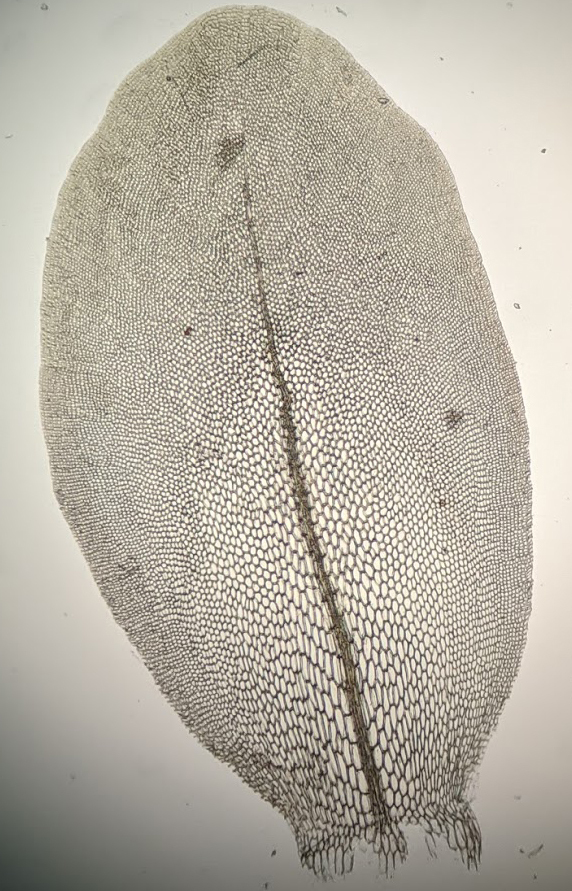Distichophyllum microcarpum
(Hedw.) Mitt.Dioicous. Asexual propagules absent. Loose mats on soil, rocks, logs, tree ferns and bases of shrubs, dark green to yellow-green. Stems 7–50 mm long, sparingly branched from base, yellow or brown, tomentose with brown rhizoids toward base or occasionally for most of stem. Leaves distichous, variously weakly wrinkled when dry, spathulate, 1.7–3.8 mm long, 0.8–1.8 mm wide, plane; apex rounded; costa extending more than three quarters of leaf length; margins entire to crenate, plane, without a border; laminal cells irregularly quadrate, rectangular or hexagonal, 7–30 μm long, 5–27 μm wide, smooth, extending to near base along margins; laminal cells near costa greatly enlarged in a region extending c. 2/3 of the costa length and 1/3 to ½ of the way to the margin, to c. 120 μm long and 38 μm wide, rectangular to hexagonal, smooth. Setae 3–12 mm long, red-brown smooth, not twisted. Capsule vertical to pendent, ovoid or obovoid, 0.5–1 mm long, straight. Calyptra smooth at apex. Operculum long-rostrate from conic base, 0.2–1.2 mm long.
GleP, VVP, GipP, OtP, WaP, CVU, GGr, EGL, WPro, HSF, HNF, OtR, Strz. New Zealand. Widespread along and south of the Great Dividing Range in moist sites among a variety of different habitats including coastal cliffs, cave entrances, sclerophyll forests and rainforests.
 Spinning
SpinningStreimann, H. (1999). Taxonomic studies on Australian Hookeriaceae (Musci). 2. The genera Distichophyllum and Bryobrothera. Journal of the Hattori Botanical Laboratory 86: 89–119.



